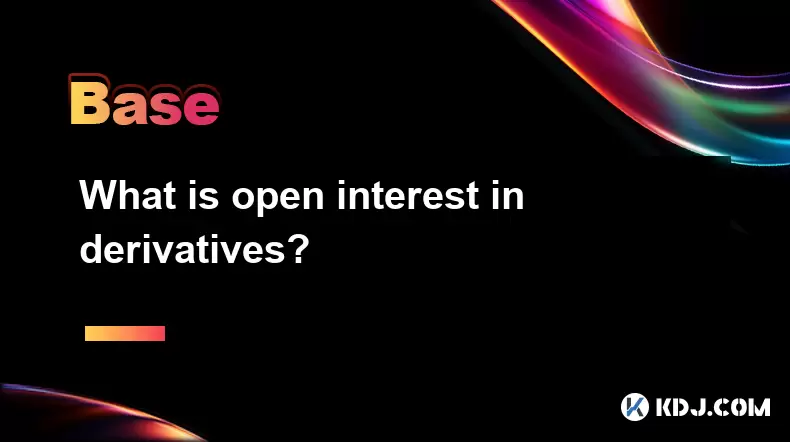-
 Bitcoin
Bitcoin $109,459.7682
2.44% -
 Ethereum
Ethereum $2,598.6052
6.29% -
 Tether USDt
Tether USDt $1.0003
0.00% -
 XRP
XRP $2.2734
3.95% -
 BNB
BNB $661.4886
1.58% -
 Solana
Solana $155.4825
4.35% -
 USDC
USDC $0.9999
-0.02% -
 TRON
TRON $0.2838
1.04% -
 Dogecoin
Dogecoin $0.1740
8.25% -
 Cardano
Cardano $0.6047
9.04% -
 Hyperliquid
Hyperliquid $40.2302
6.50% -
 Sui
Sui $2.9863
10.05% -
 Bitcoin Cash
Bitcoin Cash $509.5786
0.60% -
 Chainlink
Chainlink $13.8156
6.03% -
 UNUS SED LEO
UNUS SED LEO $9.0142
0.69% -
 Avalanche
Avalanche $19.0337
8.68% -
 Stellar
Stellar $0.2438
5.17% -
 Toncoin
Toncoin $2.9012
3.59% -
 Shiba Inu
Shiba Inu $0.0...01210
6.20% -
 Litecoin
Litecoin $90.0882
7.05% -
 Hedera
Hedera $0.1597
8.53% -
 Monero
Monero $326.3340
2.88% -
 Polkadot
Polkadot $3.6365
9.32% -
 Bitget Token
Bitget Token $4.6162
2.72% -
 Dai
Dai $1.0001
0.00% -
 Ethena USDe
Ethena USDe $1.0002
-0.01% -
 Uniswap
Uniswap $7.6403
10.47% -
 Pepe
Pepe $0.0...01060
12.03% -
 Aave
Aave $281.3664
7.56% -
 Pi
Pi $0.4992
1.76%
What is an elliptic curve?
Elliptic curves, defined by y² = x³ + ax + b, are crucial in crypto for secure transactions and digital signatures, using curves like secp256k1 in Bitcoin.
Apr 08, 2025 at 01:21 am

An elliptic curve is a fundamental concept in mathematics that has found significant applications in the field of cryptography, particularly within the cryptocurrency sector. In the context of cryptocurrencies, elliptic curves are used to create secure cryptographic systems that underpin the security of transactions and the generation of digital signatures.
Definition of an Elliptic Curve
An elliptic curve is defined by an equation of the form y² = x³ + ax + b, where a and b are constants that determine the shape of the curve. This equation must satisfy the condition that 4a³ + 27b² ≠ 0 to ensure the curve is non-singular. In the realm of cryptocurrencies, these curves are typically defined over finite fields, which are sets of numbers with a finite number of elements.
Importance in Cryptography
The use of elliptic curves in cryptography stems from their ability to provide high levels of security with relatively small key sizes. This efficiency is crucial for cryptocurrencies, where computational resources and speed are important factors. Elliptic Curve Cryptography (ECC) leverages the difficulty of solving the elliptic curve discrete logarithm problem (ECDLP), which is the basis for the security of many cryptographic protocols used in cryptocurrencies.
Application in Cryptocurrencies
In the world of cryptocurrencies, elliptic curves are primarily used in two key areas: digital signatures and key generation. For instance, Bitcoin and many other cryptocurrencies use the secp256k1 elliptic curve for these purposes. The secp256k1 curve is defined over a finite field of prime order, and its parameters are specifically chosen to ensure the security and efficiency of the cryptographic operations.
How Elliptic Curves Work in Cryptocurrencies
To understand how elliptic curves function within cryptocurrencies, consider the process of generating a public key from a private key. In Bitcoin, a private key is a randomly generated number. This private key is then used to perform a scalar multiplication on a point on the secp256k1 curve, known as the generator point. The result of this multiplication is the public key, which is a point on the curve.
- Choose a private key: A random number within the range of the curve's order.
- Multiply the private key by the generator point: This operation results in a new point on the curve, which is the public key.
- Use the public key for transactions: The public key can be used to create addresses and verify signatures.
Security of Elliptic Curve Cryptography
The security of elliptic curve cryptography relies on the difficulty of the elliptic curve discrete logarithm problem. Given a point on the curve and the result of multiplying that point by a scalar, it is computationally infeasible to determine the scalar used. This property ensures that even if an attacker knows the public key, they cannot feasibly determine the private key.
In the context of cryptocurrencies, this means that the private keys used to sign transactions remain secure, and the integrity of the blockchain is maintained. The use of elliptic curves allows for smaller key sizes compared to other cryptographic systems like RSA, which is advantageous for the resource-constrained environments often found in cryptocurrency applications.
Practical Example: Bitcoin's Use of Elliptic Curves
Bitcoin's implementation of elliptic curve cryptography is a practical example of how these mathematical constructs are used in real-world applications. Bitcoin uses the secp256k1 curve, which is defined over the finite field of prime order p = 2^256 - 2^32 - 2^9 - 2^8 - 2^7 - 2^6 - 2^4 - 1. The generator point G on this curve is used to generate public keys from private keys.
- Private key generation: A random number d is chosen such that 1 ≤ d < n, where n is the order of the curve.
- Public key generation: The public key Q is calculated as Q = dG, where G is the generator point.
- Digital signatures: The Elliptic Curve Digital Signature Algorithm (ECDSA) is used to sign transactions, ensuring their authenticity and integrity.
Challenges and Considerations
While elliptic curves offer significant advantages in terms of security and efficiency, there are also challenges and considerations to be aware of. One such challenge is the need for careful implementation to avoid vulnerabilities. For example, side-channel attacks can potentially reveal information about the private key if the implementation is not secure.
Additionally, the choice of the elliptic curve and its parameters is crucial. The secp256k1 curve used in Bitcoin was chosen for its security and efficiency, but other curves like Curve25519 are also used in various cryptographic applications. The selection of the curve and its parameters must be done with careful consideration of the specific requirements of the cryptocurrency system.
Frequently Asked Questions
Q: Can elliptic curves be used for encryption in cryptocurrencies?
A: While elliptic curves are primarily used for digital signatures and key generation in cryptocurrencies, they can also be used for encryption. For example, the Elliptic Curve Integrated Encryption Scheme (ECIES) is a public-key encryption scheme based on elliptic curves. However, in the context of cryptocurrencies, encryption is less commonly used compared to digital signatures.
Q: How does the choice of elliptic curve affect the security of a cryptocurrency?
A: The choice of elliptic curve significantly impacts the security of a cryptocurrency. The curve must be carefully selected to ensure it is resistant to known attacks and provides the necessary level of security. The parameters of the curve, such as the field size and the order of the curve, must be chosen to balance security and efficiency. For instance, the secp256k1 curve used in Bitcoin was chosen for its balance of security and performance.
Q: Are there any alternatives to elliptic curve cryptography in cryptocurrencies?
A: Yes, there are alternatives to elliptic curve cryptography in cryptocurrencies, though they are less commonly used. One such alternative is the use of lattice-based cryptography, which is considered to be resistant to quantum computing attacks. Another alternative is hash-based cryptography, which is used in some cryptocurrencies for digital signatures. However, elliptic curve cryptography remains the most widely used due to its efficiency and security.
Q: How can one verify the security of an elliptic curve used in a cryptocurrency?
A: Verifying the security of an elliptic curve involves several steps. First, one should check that the curve and its parameters are well-documented and have been reviewed by the cryptographic community. Second, the curve should be tested against known attacks, such as the MOV attack and the invalid curve attack. Finally, the implementation of the curve in the cryptocurrency should be audited for potential vulnerabilities, such as side-channel attacks. Regular security audits and updates are essential to maintain the security of the elliptic curve used in a cryptocurrency.
Disclaimer:info@kdj.com
The information provided is not trading advice. kdj.com does not assume any responsibility for any investments made based on the information provided in this article. Cryptocurrencies are highly volatile and it is highly recommended that you invest with caution after thorough research!
If you believe that the content used on this website infringes your copyright, please contact us immediately (info@kdj.com) and we will delete it promptly.
- Altcoin Alert: Binance Listings and the Wild West of Crypto
- 2025-07-03 14:30:11
- Decentralized Stablecoins in 2025: Challenging Centralized Counterparts?
- 2025-07-03 14:30:11
- Meme Coin Mania: Is BTC Bull the Next Big Thing in a Limited Time BTC Bull Run?
- 2025-07-03 12:30:11
- Bitcoin Soars to $109,000: What's Fueling the Crypto Rally?
- 2025-07-03 10:30:13
- Hong Kong: Racing to Be the World's Tokenization Hub
- 2025-07-03 14:50:11
- Splatterhouse Rocks Retro Scene: A UK Magazine Deep Dive
- 2025-07-03 12:30:11
Related knowledge

What is open interest in derivatives?
Jul 03,2025 at 02:49pm
Understanding Open Interest in DerivativesOpen interest is a critical metric used in the cryptocurrency derivatives market, particularly when analyzing futures and options contracts. It represents the total number of outstanding contracts that have not been settled or closed by either party involved. Unlike trading volume, which counts all trades made i...

What is a liquidation cascade?
Jul 03,2025 at 07:15am
Understanding the Concept of LiquidationIn the realm of cryptocurrency trading, liquidation refers to the process by which a trader's position is automatically closed due to insufficient funds to maintain the leveraged trade. This typically occurs when the market moves against the trader's position and their account equity falls below the required maint...

What is a hard fork coordinator?
Jul 03,2025 at 12:42pm
Understanding the Role of a Hard Fork CoordinatorIn the world of blockchain and cryptocurrencies, a hard fork coordinator plays a critical role during major network upgrades. A hard fork is a significant change to a blockchain’s protocol that makes previously invalid blocks or transactions valid (or vice versa). This type of upgrade requires all nodes o...

What is a Byzantine Fault Tolerance (BFT)?
Jul 03,2025 at 11:49am
Understanding the Concept of Byzantine Fault ToleranceByzantine Fault Tolerance (BFT) is a critical concept in distributed systems, particularly within the realm of blockchain technology and cryptocurrencies. It refers to the ability of a system to continue functioning correctly even when some components fail or behave maliciously. The term originates f...

What is a subDAO?
Jul 03,2025 at 09:36am
Understanding the Concept of SubDAOA SubDAO, short for Sub-Decentralized Autonomous Organization, is a specialized entity that operates under the umbrella of a larger DAO (Decentralized Autonomous Organization). It functions with its own set of rules, governance mechanisms, and tokenomics while remaining aligned with the overarching goals of the parent ...

What is the Travel Rule in crypto?
Jul 03,2025 at 10:28am
Understanding the Travel Rule in CryptocurrencyThe Travel Rule is a regulatory requirement initially introduced by the Financial Action Task Force (FATF) for traditional financial institutions. It has since been extended to cryptocurrency transactions, especially those involving Virtual Asset Service Providers (VASPs). The core purpose of this rule is t...

What is open interest in derivatives?
Jul 03,2025 at 02:49pm
Understanding Open Interest in DerivativesOpen interest is a critical metric used in the cryptocurrency derivatives market, particularly when analyzing futures and options contracts. It represents the total number of outstanding contracts that have not been settled or closed by either party involved. Unlike trading volume, which counts all trades made i...

What is a liquidation cascade?
Jul 03,2025 at 07:15am
Understanding the Concept of LiquidationIn the realm of cryptocurrency trading, liquidation refers to the process by which a trader's position is automatically closed due to insufficient funds to maintain the leveraged trade. This typically occurs when the market moves against the trader's position and their account equity falls below the required maint...

What is a hard fork coordinator?
Jul 03,2025 at 12:42pm
Understanding the Role of a Hard Fork CoordinatorIn the world of blockchain and cryptocurrencies, a hard fork coordinator plays a critical role during major network upgrades. A hard fork is a significant change to a blockchain’s protocol that makes previously invalid blocks or transactions valid (or vice versa). This type of upgrade requires all nodes o...

What is a Byzantine Fault Tolerance (BFT)?
Jul 03,2025 at 11:49am
Understanding the Concept of Byzantine Fault ToleranceByzantine Fault Tolerance (BFT) is a critical concept in distributed systems, particularly within the realm of blockchain technology and cryptocurrencies. It refers to the ability of a system to continue functioning correctly even when some components fail or behave maliciously. The term originates f...

What is a subDAO?
Jul 03,2025 at 09:36am
Understanding the Concept of SubDAOA SubDAO, short for Sub-Decentralized Autonomous Organization, is a specialized entity that operates under the umbrella of a larger DAO (Decentralized Autonomous Organization). It functions with its own set of rules, governance mechanisms, and tokenomics while remaining aligned with the overarching goals of the parent ...

What is the Travel Rule in crypto?
Jul 03,2025 at 10:28am
Understanding the Travel Rule in CryptocurrencyThe Travel Rule is a regulatory requirement initially introduced by the Financial Action Task Force (FATF) for traditional financial institutions. It has since been extended to cryptocurrency transactions, especially those involving Virtual Asset Service Providers (VASPs). The core purpose of this rule is t...
See all articles

























































































